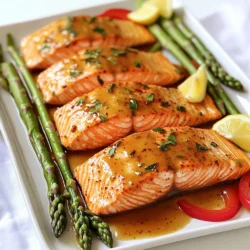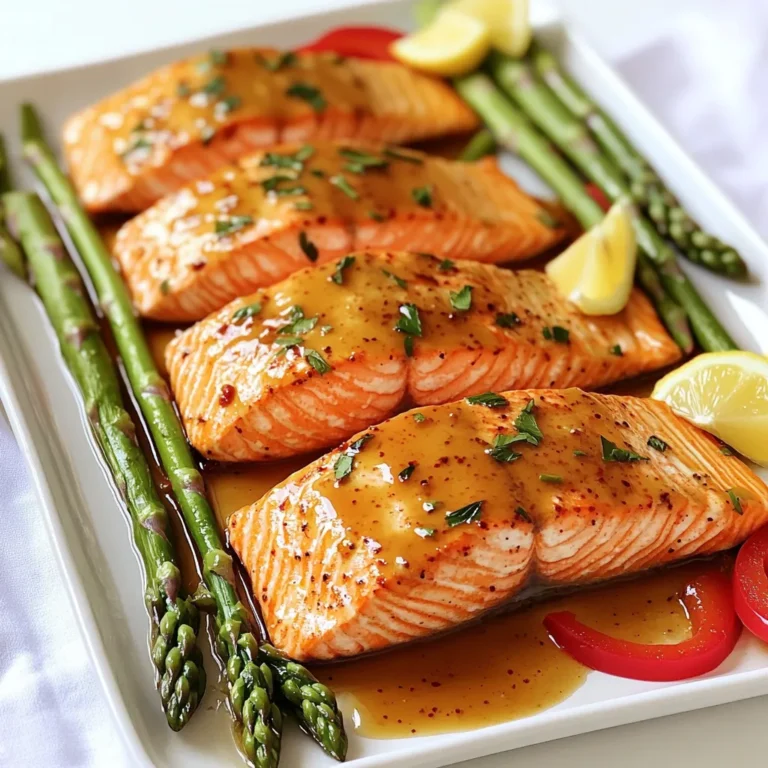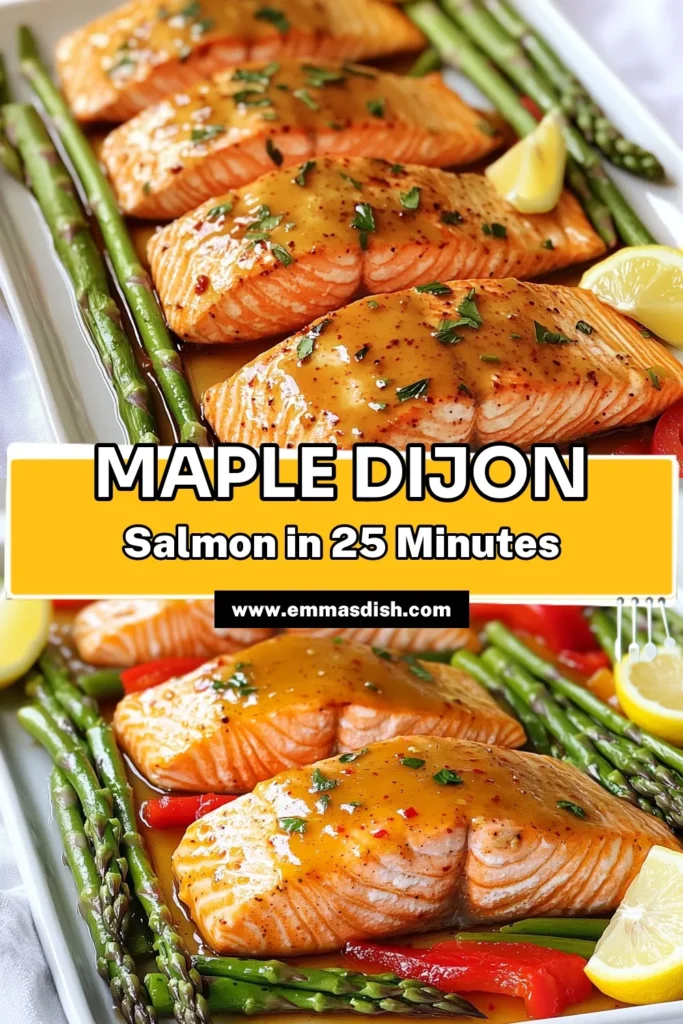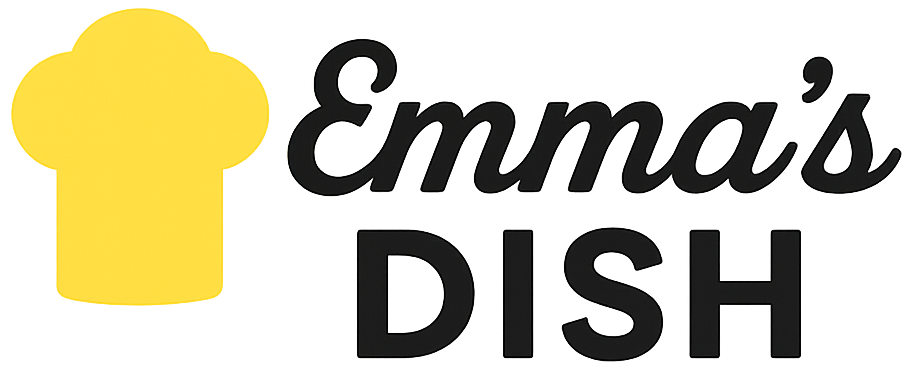If you’re craving a dish that’s both savory and simple, look no further! My Sheet Pan Maple Dijon Salmon is easy to make and packed with flavor. This one-pan meal features salmon that glistens with a sweet and tangy maple-Dijon glaze, fresh veggies, and bright lemon. Perfect for busy nights or a cozy dinner, this dish is sure to impress. Let’s dive into how to whip it up!
Ingredients
Here are the key ingredients for your Sheet Pan Maple Dijon Salmon. Each one adds flavor and makes this dish special.
– 4 salmon fillets (6 oz each)
– 1/4 cup pure maple syrup
– 2 tablespoons Dijon mustard
– 2 tablespoons olive oil
– 2 cloves garlic, minced
– 1 teaspoon fresh thyme (or 1/2 teaspoon dried thyme)
– Salt and pepper to taste
– 1 bunch asparagus, trimmed
– 1 red bell pepper, sliced
– Lemon wedges for serving
The salmon fillets are the star of this dish. They cook well and taste rich. Maple syrup gives a sweet glaze, while Dijon mustard adds a nice kick. Olive oil keeps everything moist and helps with browning.
Garlic adds depth, and thyme gives a hint of earthiness. Don’t forget salt and pepper! They enhance all the flavors.
Asparagus and red bell pepper add color and crunch. They cook quickly, making them perfect for this sheet pan meal. Lemon wedges on the side add a fresh, zesty note.
Gather these ingredients, and you are ready to create a tasty meal that feels fancy but is easy to make!
Step-by-Step Instructions
Preparation Steps
– Preheat your oven to 400°F (200°C).
– Line a large baking sheet with parchment paper.
– In a small bowl, mix 1/4 cup maple syrup, 2 tablespoons Dijon mustard, 2 tablespoons olive oil, 2 minced garlic cloves, and 1 teaspoon fresh thyme. Add salt and pepper to taste.
Cooking Steps
– Place 4 salmon fillets on one side of the baking sheet.
– Brush half of the maple-Dijon mixture over the salmon.
– On the other side, add the trimmed asparagus and sliced red bell pepper.
– Drizzle the remaining sauce over the veggies and toss to coat.
– Bake for 15-20 minutes, until salmon flakes easily and veggies are tender.
Serving Suggestions
– Plate the salmon and vegetables.
– Serve with lemon wedges for a fresh touch.
Tips & Tricks
Cooking Tips
How do I check salmon doneness?
To check if salmon is done, use a fork. Gently flake the fish at the thickest part. If it flakes easily, it is ready. You can also use a meat thermometer. The safe cooking temperature is 145°F (63°C).
How do I achieve tender vegetables?
For tender vegetables, cut them into similar sizes. This helps them cook evenly. Keep an eye on the baking time. Asparagus and bell peppers usually take about 15-20 minutes. If they are not tender, bake them for a few extra minutes.
Enhancement Suggestions
What spices or herbs can I add?
You can add spices like paprika or cayenne for heat. Fresh herbs like parsley or dill can brighten the dish. Experiment with what you like best. A bit of lemon zest can also add a fresh touch.
What alternative vegetables can I pair with salmon?
Try using broccoli, zucchini, or carrots. These vegetables roast well and add great flavor. You can mix and match based on what you have at home. Each choice will bring a unique taste to the dish.
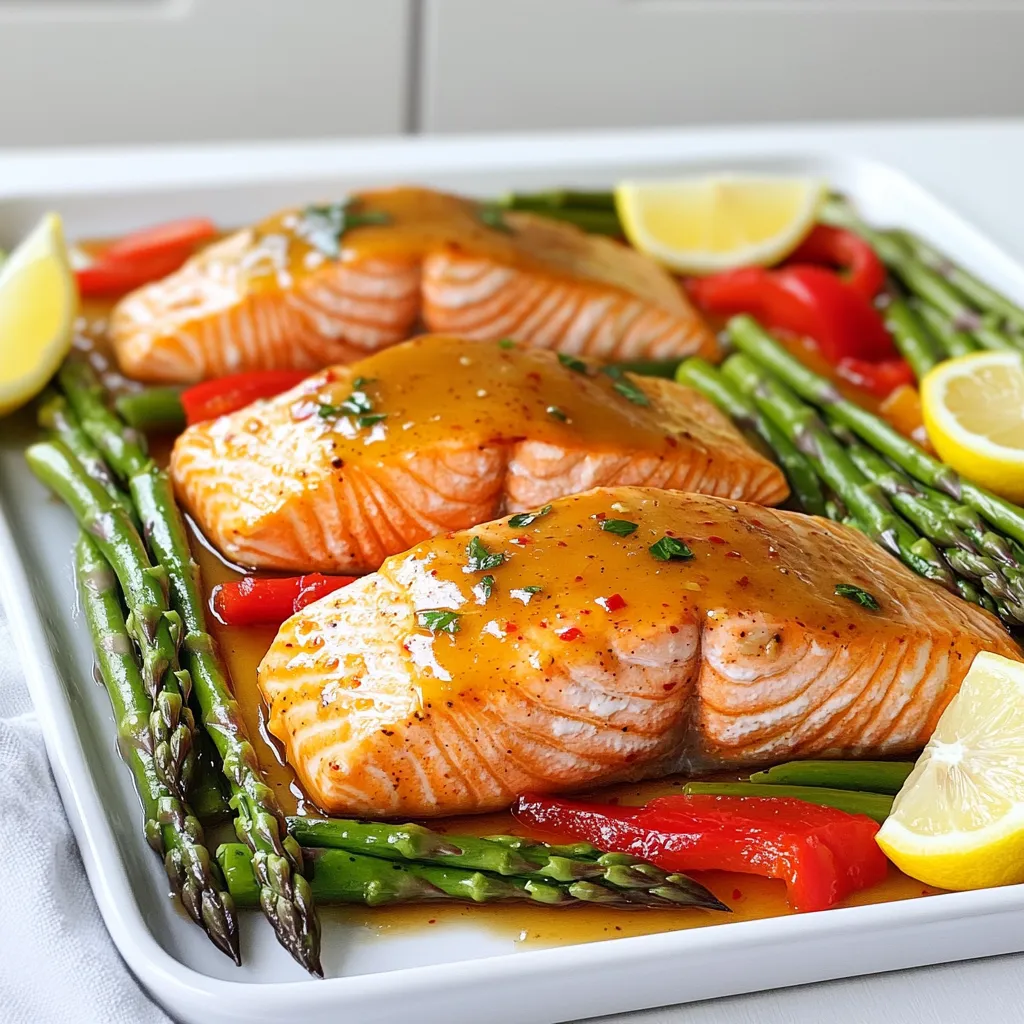
Variations
Alternative Proteins
You can swap salmon for chicken or tofu. Chicken thighs work great. They cook well and stay moist. For tofu, use firm or extra firm. Cut it into cubes and soak in the maple-Dijon sauce. This gives it a nice flavor. Both options are easy and quick to prepare.
Flavor Modifications
You can change the sweetness or tanginess of the dish. If you want it sweeter, add more maple syrup. For a tangier taste, increase the Dijon mustard. You can also mix in a splash of vinegar. This adds depth to the flavor. Always taste as you go to find what you like best.
Vegetable Mixes
You can use many seasonal vegetables in this dish. Try broccoli, carrots, or zucchini. These veggies roast well and add color. You can also use snap peas for a nice crunch. Just make sure they all cook evenly. Toss them in the maple-Dijon sauce for extra flavor.
Storage Info
Leftover Storage
To keep your leftovers fresh, first, let the dish cool down. Place the salmon and veggies in an airtight container. Store the container in the fridge. Consume leftovers within three days for the best taste. You can also keep the salmon and veggies separate to maintain texture. This way, you enjoy the flavors longer.
Reheating Instructions
Reheating salmon and vegetables requires care to keep them tasty. Preheat your oven to 350°F (175°C). Place the salmon and veggies on a baking sheet. Cover them with foil to avoid drying out. Heat for about 10 minutes, or until warm. You can also reheat in the microwave. Use a microwave-safe dish and cover it. Heat in 30-second bursts until warm.
Freezing Options
Yes, you can freeze this dish! To freeze, let the leftovers cool completely. Wrap each piece of salmon and veggies tightly in plastic wrap. Then, place them in a freezer bag. Remove as much air as possible before sealing. This keeps flavors fresh. You can freeze it for up to three months. When you’re ready to eat, thaw in the fridge overnight before reheating.
FAQs
How long should I bake salmon at 400°F?
You should bake salmon at 400°F for 15 to 20 minutes. The thickness of the fillets affects the time. Salmon is done when it flakes easily with a fork. This means it is cooked well and safe to eat. Make sure to check it around the 15-minute mark. If it needs more time, give it a few more minutes.
Can I use fresh herbs instead of dried?
Yes, you can use fresh herbs instead of dried. Fresh thyme is a great choice. It brings a bright flavor to the dish. Use about three times the amount of fresh herbs as dried ones. For example, if a recipe calls for 1 teaspoon of dried thyme, use 3 teaspoons of fresh thyme. You can also try other herbs like parsley or dill for a different taste.
Is Sheet Pan Maple Dijon Salmon healthy?
Yes, Sheet Pan Maple Dijon Salmon is a healthy dish. Salmon is rich in omega-3 fatty acids. These are good for your heart and brain. Asparagus and bell peppers add vitamins and fiber. The maple syrup and Dijon mustard provide flavor without too many calories. Overall, this dish balances protein and vegetables well. It makes a nutritious meal for you and your family.
This blog post shows how to make Sheet Pan Maple Dijon Salmon. We covered the key ingredients, from salmon fillets to fresh veggies. I explained each step, from preheating the oven to serving the dish. Tips helped check doneness and enhance flavors. We even explored variations with other proteins and vegetables. Remember, you can store and reheat leftovers easily. Enjoy this simple, tasty meal that’s healthy too!
